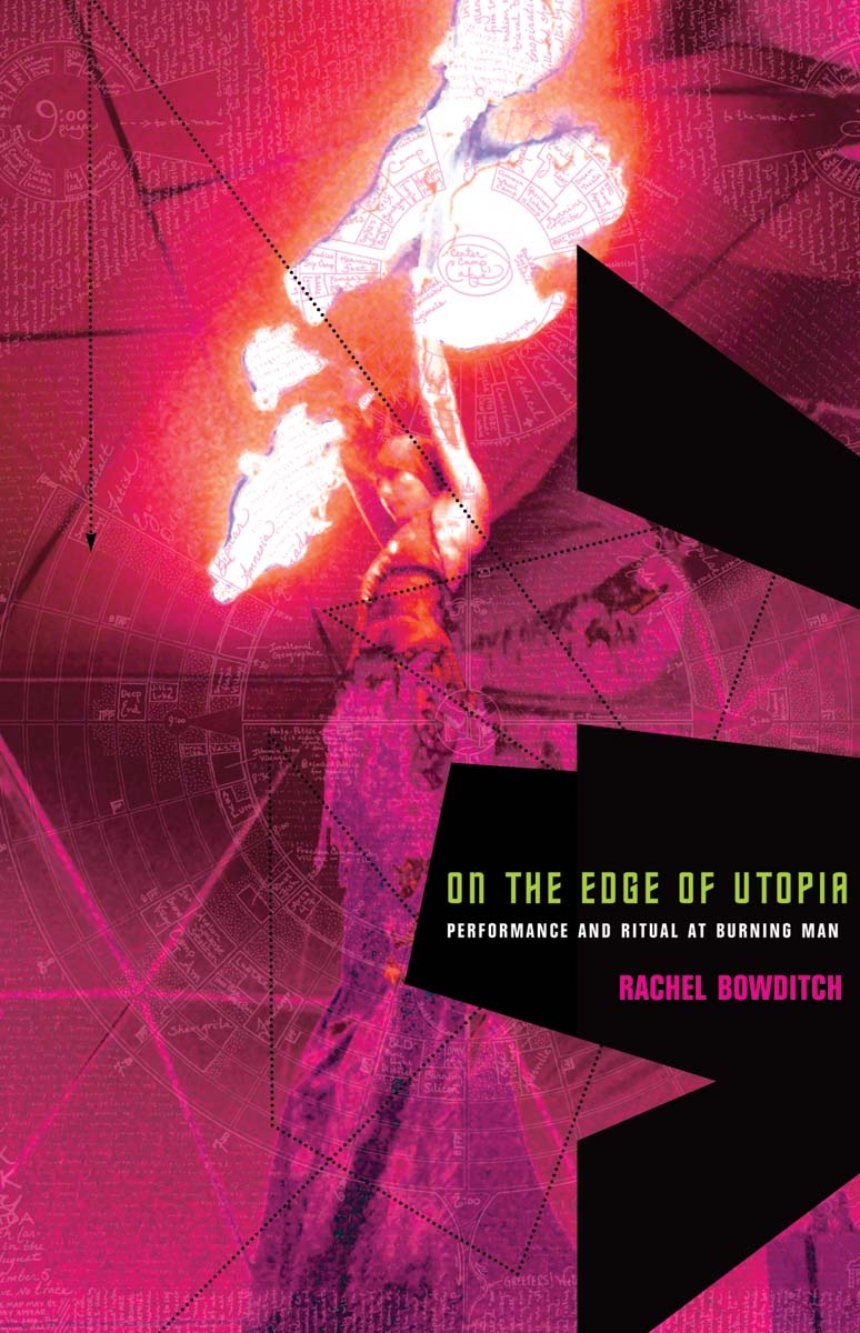During the week before Labor Day every year, 35,000 people gather in Nevada’s Black Rock Desert and build Black Rock City. At the center of Black Rock City is a 40-foot wooden effigy of a man, an icon around which art, performance, and community revolve. Since 1986, the Burning Man Festival named for this effigy has evolved from founder Larry Harvey’s personal healing ritual into a cultural movement where ceremony, religion, visual art, and performance converge on an epic scale.
In On the Edge of Utopia, Rachel Bowditch— performer, theatre director, scholar, and Burning Man participant—explores the spectrum of performance and ritual practices within Black Rock City from the everyday to wild spectacle, the profane to the sublime. Bowditch argues that Burning Man can be understood as a contemporary galaxy of happenings, a revival of the ancient Roman Saturnalia, a site for rehearsals of utopia, and a secular pilgrimage. As Burning Man continues to grow, it will create new paradigms for performance, installation art, community, and invented rituals that bridge ancient traditions to the twenty-first century.
Table of Contents
Acknowledgements
List of Figures
Preface
Introduction
Part One: Blueprint of Black Rock City
Chapter 1
Seeds of a Movement: From Chaos to Order
Chapter 2
Rehearsing Utopia
Part Two: Realms of Performance
Chapter 3
Spontaneous Acts: From Performances of Everyday Life to the Carnivalesque
Chapter 4
Dark Carnival: The New American Alternative to Circus
Part Three: Realms of Ritual
Chapter 5
Reinventing Ritual in Black Rock City
Chapter 6
Dancing with Fire: The Ultimate Effigy
Chapter 7
Burning Man Diaspora: Beyond Black Rock City
Selected Bibliography
Index

